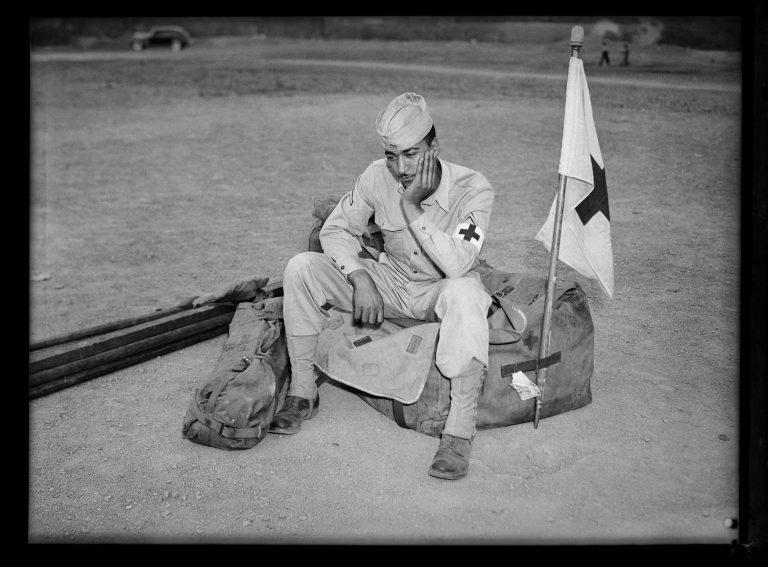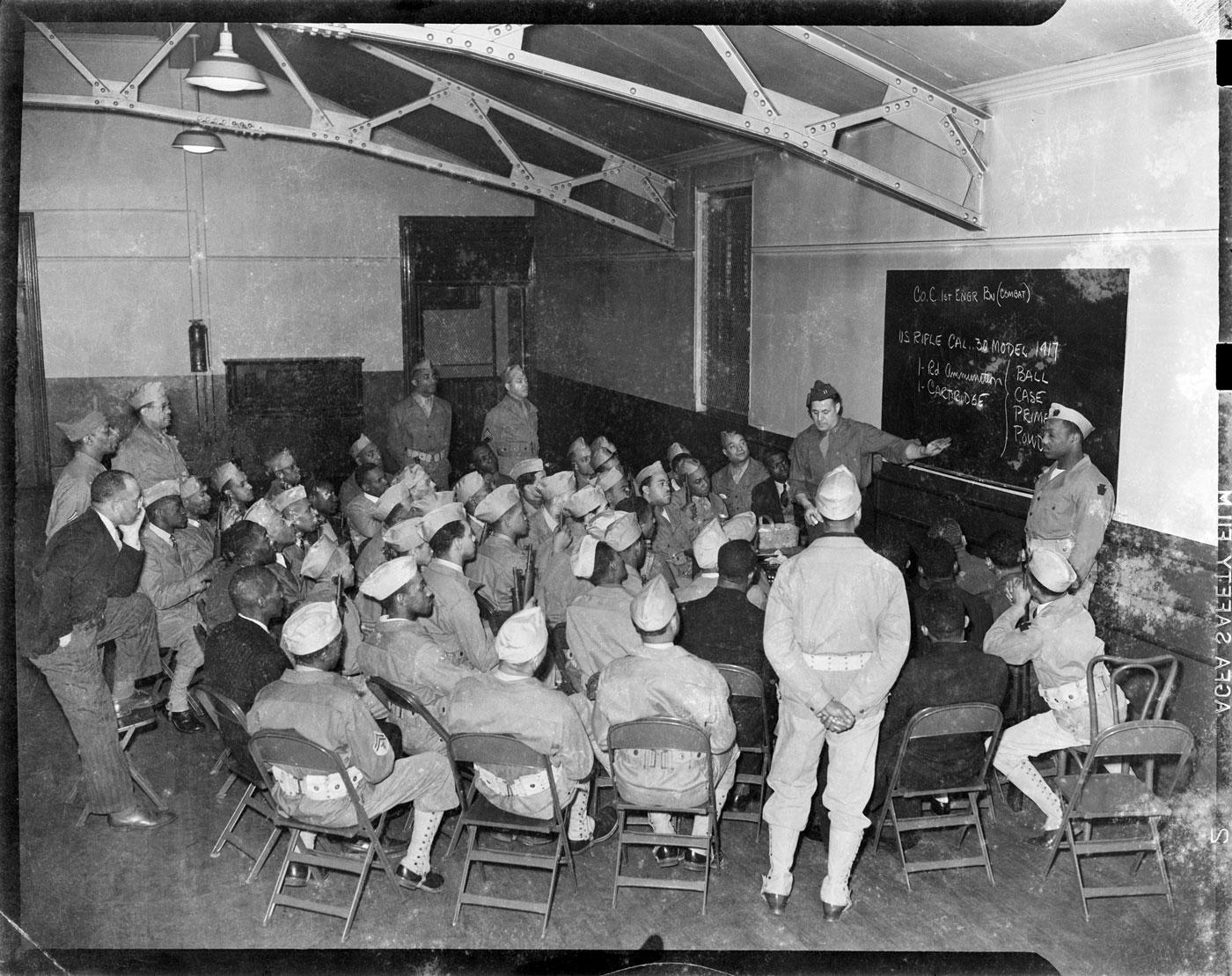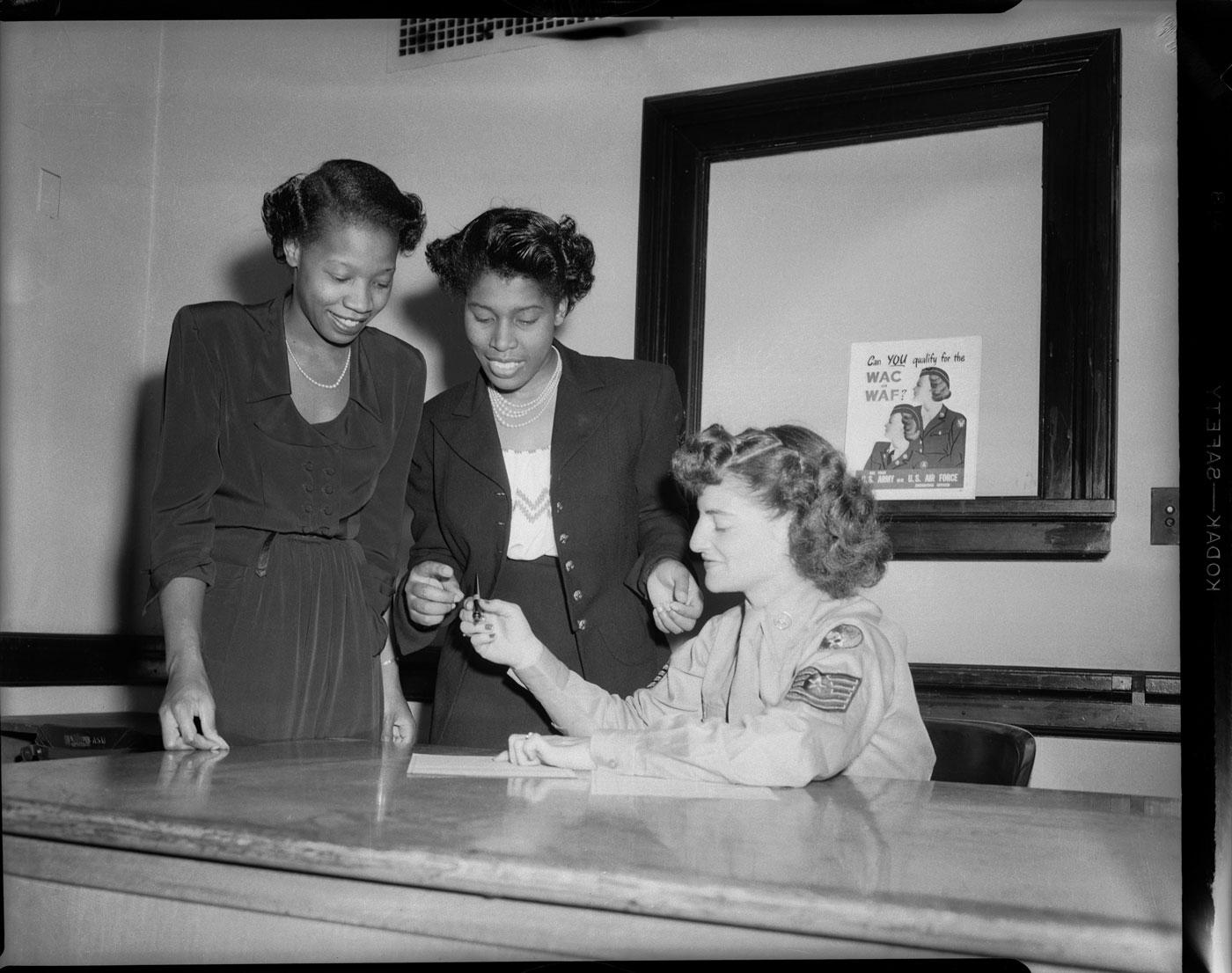Curators’ Statements
“During World War II, this country was segregated. If you were a black draftee, you in most cases went to the South to be trained in the South. Your officers were mostly white and mostly Southern, and they were picked because of their Southern background, because it was assumed that they knew how to handle you. There were times when the enemy was nicer than the person who commanded you.
“Today, I would recommend any of our military services to a young black person looking for a career. It’s not easy. It calls for a lot of dedication, concentration, and a love of country. But this is America. This is all our home.” —Eugene Boyer Jr.
“Harris preserves the legacy of black patriotism in Pittsburgh during a time of visible discrimination. His lens permits us to witness the valor and sacrifice of black women and men in our military.
“Working on this exhibit, I tried to put myself in the shoes of black patriots who served during the Jim Crow era. I questioned whether their sacrifice for America afforded them any of its fundamental protections and promises. I questioned how they endured the indignity of being a “solider” abroad but a “boy” at home. Most of all, I questioned how they reconciled their allegiance to America with its long, violent history of subjugating black citizens.
“Nearly 70 years after President Truman desegregated the armed forces, these questions still cause a personal rift. When loyalties to my heritage and my veteran status threaten to tear me apart, I am empowered by the perseverance and triumphs of black patriots who served before me. Listening to veterans like Mr. Boyer and my grandfather, Sidney Ivory, I learn that my pride in my heritage is not compromised by a willingness to serve my country.” —Lance A. Woods
Teenie Harris Photographs: Service and Sacrifice is guest-curated by Eugene Boyer Jr. and Lance A. Woods, in collaboration with Dominique Luster, Teenie Harris Archivist.
Support
The Teenie Harris Archive at Carnegie Museum of Art is generously supported by the Richard King Mellon Foundation.
General operating support for Carnegie Museum of Art is provided by The Heinz Endowments and Allegheny Regional Asset District. The programs of the Heinz Architectural Center are made possible by the generosity of the Drue Heinz Trust. Carnegie Museum of Art receives state arts funding support through a grant from the Pennsylvania Council on the Arts, a state agency funded by the Commonwealth of Pennsylvania.
Carnegie Museum of Art
CMOA creates experiences that connect people to art, ideas, and one another. We believe that creativity is a defining human characteristic to which everyone should have access. CMOA collects, preserves, and presents artworks from around the world in order to inspire, sustain, and provoke discussion, and to engage and reflect multiple audiences. Our world-class collection of over 30,000 works emphasizes art, architecture, photography, and design from the 19th century to the present. One of the four Carnegie Museums of Pittsburgh, Carnegie Museum of Art was founded by industrialist and philanthropist Andrew Carnegie in 1895.































